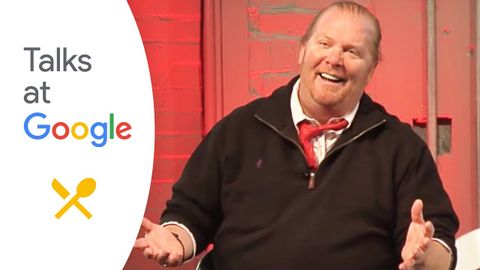
Subtitles & vocabulary
Mario Batali: "Mario Batali Cooks!" | Chefs at Google
00
Sū-guân Âng posted on 2015/06/21Save
Video vocabulary
to
US /tu,tə/
・
UK /tə/
- Adverb
- Toward a point, person, place or thing
- Into a state of consciousness or awareness
- Preposition
- Showing that one thing is attached to another
- (Indicates a comparison between two people/things)
A1
More go
US /ɡo/
・
UK /ɡəʊ/
- Verb (Transitive/Intransitive)
- To attend or be at a place
- To do an activity
- Countable Noun
- A turn in a game
A1
More people
US /ˈpipəl/
・
UK /'pi:pl/
- Noun (Countable/Uncountable)
- Persons sharing culture, country, background, etc.
- Men, Women, Children
- Transitive Verb
- To populate; to fill with people.
A1
More audience
US /ˈɔdiəns/
・
UK /ˈɔ:diəns/
- Noun (Countable/Uncountable)
- Group of people attending a play, movie etc.
A2TOEIC
More Use Energy
Unlock All Vocabulary
Unlock pronunciation, explanations, and filters
